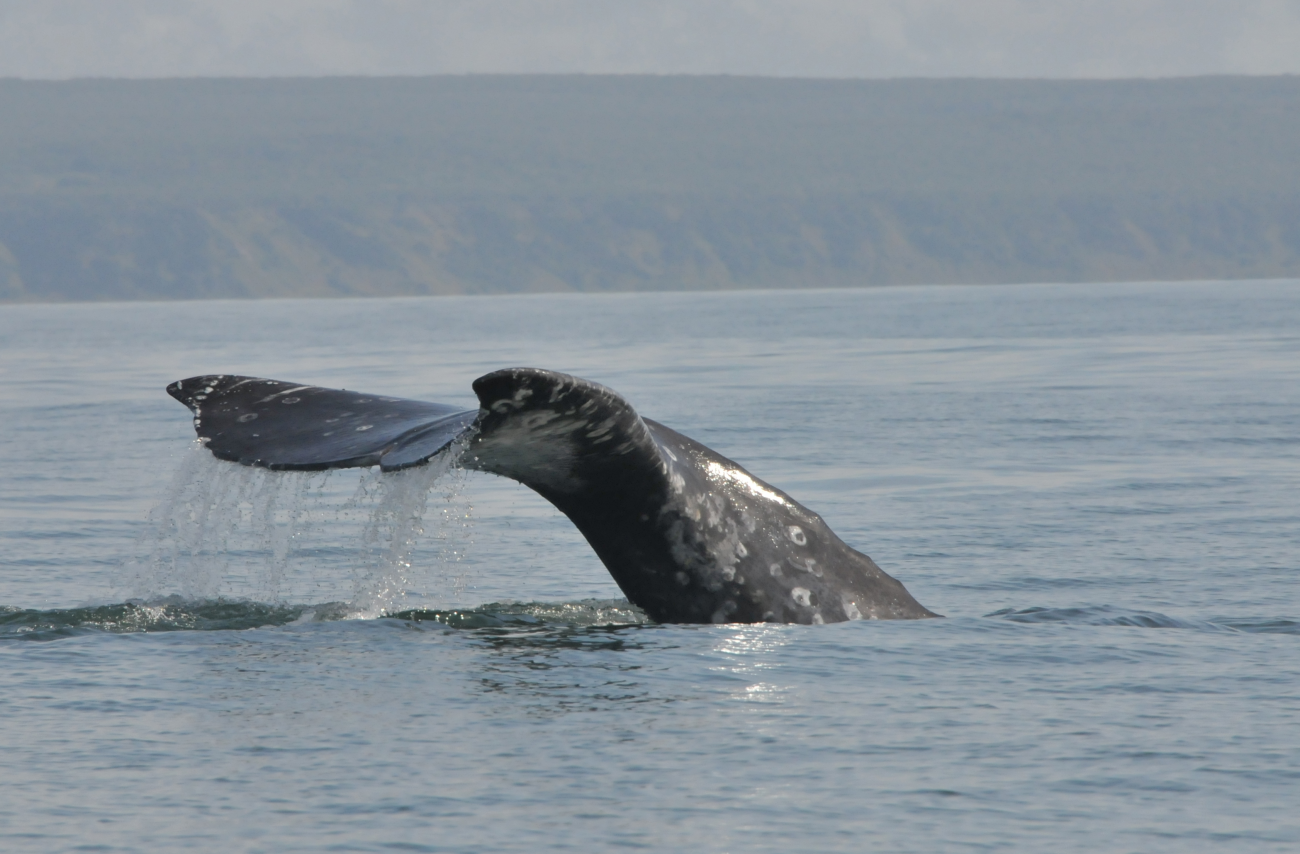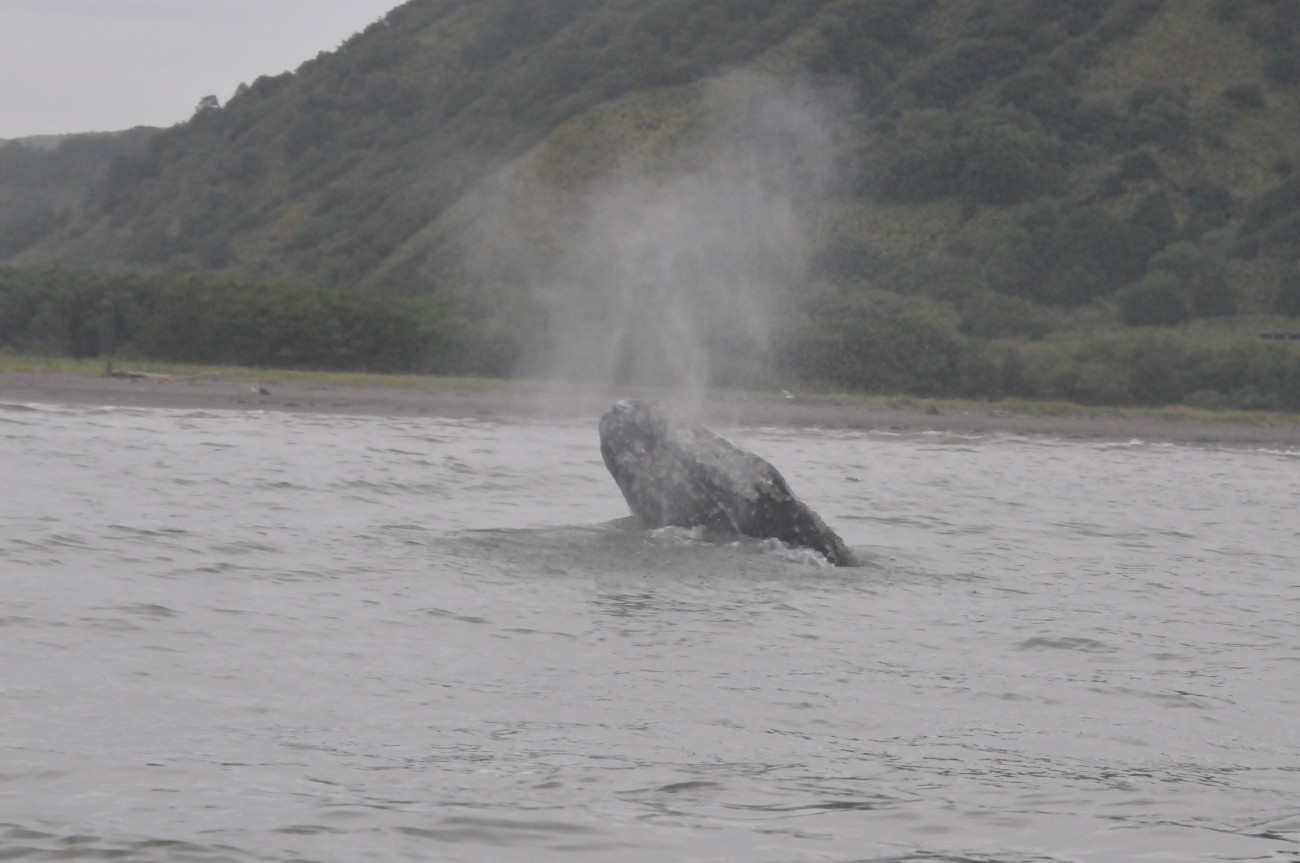
Whales of the same species, born in another part of the world, feed in summer and autumn in different areas of the Far East on different bottom organisms to accumulate fat reserves before long-distance migration. Specialists from the A.N. Severtsov Institute of Ecology and Evolution of the Russian Academy of Sciences obtained new data during a laboratory analysis of biopsy samples. This year, they continued their research into the planet's most ancient cetaceans in Kronotsky Bay.

The first expedition of the Severtsov Institute of Ecology and Evolution of the Russian Academy of Sciences to study gray whales started in the waters of the Kronotsky Nature Reserve in early summer 2022. This year, scientists received interesting information from the results of laboratory tests of a biopsy that was performed two years ago. It turned out that in order to accumulate fat reserves, gray whales that feed in different areas, due to the natural features of their feeding grounds, eat different foods.

"We have conducted extensive work with gray whales in the coastal waters of Sakhalin, Kamchatka and Chukotka. Including collecting biopsy samples for several years. The process is as follows: we carefully approach the whale in a boat and shoot it with a crossbow. At the end of the arrow there is a small sampler, in which skin and subcutaneous fat remain after the shot. Usually, whales do not react to the shot at all or react weakly. And they do not even move away from us. We send the collected samples to the laboratory for lipid and isotope analysis," explained Matvey Mamayev, head of the expedition, leading engineer of the Severtsov Institute of Ecology and Evolution of the Russian Academy of Sciences.

Laboratory studies have shown that food chains are longer in Chukotka, meaning they include more elements. Gray whales feed there mainly on several species of amphipods and ammodytes. In Kamchatka and Sakhalin, food chains are shorter, with other types of crustaceans, specific species of polychaete worms, and bivalves predominating in the whales' diet.

In Chukotka, gray whales are more successful in fattening, as can be seen from the higher lipid content in the fat samples of Chukotka whales. But samples from Kamchatka are characterized by a high content of cholesterol esters, which is a secondary form of energy storage in whales, which is associated with differences in nutrition and/or internal needs of the body to store these lipids in Kamchatka.

This September, the IEE RAS staff conducted work in the northern part of Kronotsky Bay. They identified 20 gray whales from fresh photographs. The researchers encountered most of them every day, observed them feeding in the bay and moving around it. Many of the animals had previously been encountered on Sakhalin. The collected data confirmed the close connection between different feeding areas in the waters of the Northern Pacific Ocean. In the future, it will be necessary to determine the fatness of the whales from photographs - that is, how successfully they were able to accumulate fat this year before their long migration to wintering grounds and reproduction sites. These are presumably the warm waters of Mexico and California, where the animals practically do not feed. The specialists will also compare the success of whale feeding in different areas.

"It is important for us to develop cooperation with leading research institutes. For example, with the IEE RAS, in the field of gray whale research and other areas. Our long-term partnership helps solve many problems in the scientific field. We exchange experience, new research ideas, methods, develop a wide range of skills, conduct comprehensive work to study amazing marine mammals - gray whales, observing them in their natural habitat," said Olga Solovey, head of the scientific department of the Kronotsky State Nature Reserve.

The research was conducted jointly with the Kamchatka branch of the Pacific Institute of Geography of the Far Eastern Branch of the Russian Academy of Sciences, the Chukotka Arctic Scientific Center and the Institute of Biology of the Karelian Scientific Center of the Russian Academy of Sciences.

The gray whale is listed in the Red Books of the International Union for Conservation of Nature and the Russian Federation.

Related materials:
Aquaculture: "Scientists have identified the characteristics of gray whale feeding"
EcoTourismExpert: "Ученые провели исследования рациона редких серых китов из разных частей света"
Зелёная Россия: "Нелишние килограммы, или как обитатели заповедных территорий страны готовятся к зиме"
Минприроды: "Нелишние килограммы, или как обитатели заповедных территорий страны готовятся к зиме"
